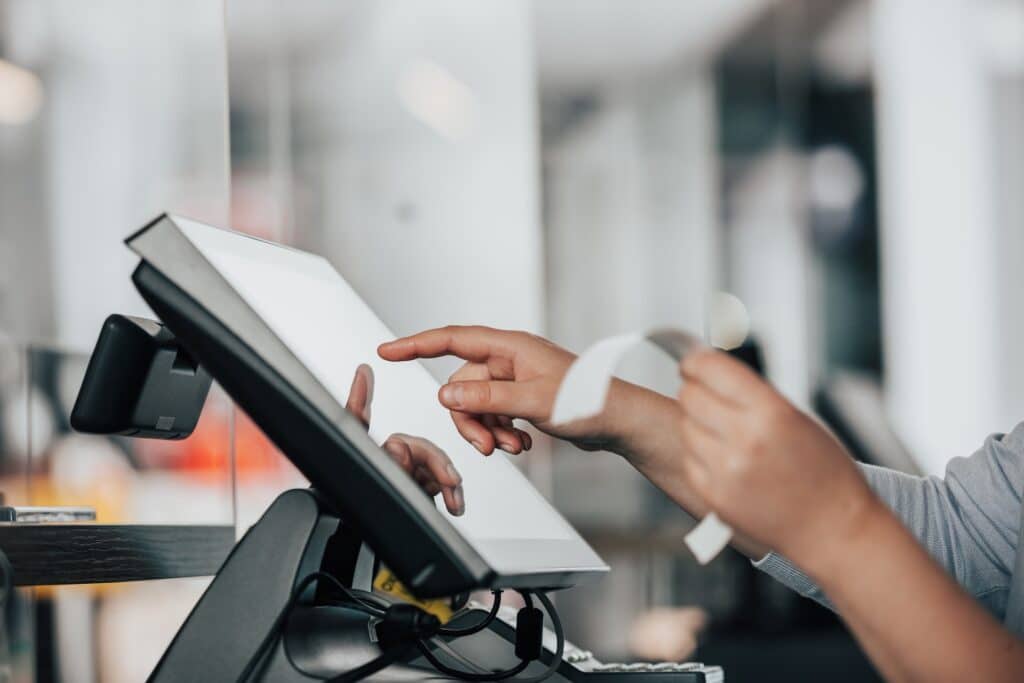Phygital, a term combining “physical” and “digital,” refers to the blending of physical and digital experiences in retail environments. E-commerce continues to grow, with models predicting e-commerce account for 24% of sales by 2026. And while that’s impressive, it means physical retail will still account for 76% of sales, indicating both models are valuable and both need to be duly supported to meet the full spectrum of customer satisfaction. Phygital retail provides a means for doing just that; it involves using technology to enhance the overall shopping experience and bridge the gap between the online and offline worlds. There are several benefits to adopting a phygital approach for retailers:
Enhanced Customer Experience
Phygital retail experiences provide customers with a seamless and immersive shopping journey. It allows retailers to create personalized experiences by leveraging customer data and offering tailored recommendations. For example, interactive displays, augmented reality (AR), or virtual reality (VR) can be used to showcase products in a virtual environment, enabling customers to visualize and experience them before making a purchase.
Increased Engagement
By combining physical and digital elements, retailers can capture customers’ attention and drive engagement. Interactive touchscreens, smart mirrors, or beacon technology can provide additional product information, customer reviews, or special offers, thereby keeping customers engaged and informed during their shopping journey.
Omnichannel Integration
Phygital retail strategies help retailers integrate their online and offline channels seamlessly. For instance, customers can order products online and pick them up at a physical store, or vice versa. This integration facilitates a consistent brand experience and allows retailers to leverage the convenience of online shopping while still maintaining a physical presence.
Data Collection and Analysis
Phygital retail technologies enable retailers to gather valuable data on customer behavior, preferences, and shopping patterns. This data can be analyzed to gain insights into customer needs and preferences, enabling retailers to make data-driven decisions regarding product offerings, marketing strategies, and inventory management.
Increased Sales and Conversion Rates
By providing an enhanced shopping experience, phygital retail strategies can drive sales and improve conversion rates. Engaging and immersive experiences, coupled with personalized recommendations, can help customers make informed purchasing decisions and increase their likelihood of completing a purchase.
Competitive Advantage
Adopting a phygital approach allows retailers to stand out in a crowded marketplace. By offering innovative and technology-driven experiences, retailers can differentiate themselves from competitors, attract new customers, and foster customer loyalty.
Overall, phygital retail strategies enable retailers to leverage the best of both the physical and digital worlds, creating a more engaging and seamless shopping experience for customers while driving business growth and customer satisfaction.

Testing phygital options
Test and learn methodologies can significantly support phygital retail by providing data-driven insights and helping retailers optimize their strategies. Here’s how a test and learn approach can optimize phygital retail opportunities:
- Experimentation
Test and learn allows retailers to experiment with various strategies, technologies, store layouts, and customer experiences. By implementing controlled tests, retailers can evaluate the impact of different changes on both physical and digital touchpoints. For example, they can test new store layouts, product placements, interactive displays, or augmented reality experiences to identify what works best in driving customer engagement and sales. - Data-driven decision-making
Test and learn enables retailers to collect and analyze data from different sources, such as point-of-sale systems, customer surveys, foot traffic sensors, or online analytics tools. By leveraging this data, retailers can gain insights into customer preferences, behavior patterns, and shopping habits. This information can be used to make data-driven decisions and optimize the phygital retail experience. - Personalization and targeting
Test and learn allows retailers to test personalized marketing strategies and offers in a phygital environment. By segmenting customers based on their preferences, demographics, or purchase history, retailers can create tailored experiences for different customer groups. For example, they can test personalized product recommendations, targeted promotions, or location-based offers to enhance customer engagement and increase conversion rates. - Seamless integration
Phygitally-focused retailers need to seamlessly integrate their physical and digital channels to provide a consistent and frictionless customer experience. Test and learn methodologies help retailers identify the most effective ways to bridge the gap between physical and digital touchpoints. By testing different omnichannel strategies, such as click-and-collect, in-store pickup, or mobile ordering, retailers can optimize the integration process and ensure a seamless experience for customers. - Agile iteration
Test and learn supports an iterative approach to retail optimization. Retailers can continuously test, measure, and refine their phygital strategies based on customer feedback and data analysis. This agile iteration allows them to quickly adapt to changing market trends, customer preferences, and technological advancements. By continuously optimizing their phygital retail operations, retailers can stay competitive in the evolving retail landscape.
Overall, test and learn methodologies provide retailers with valuable insights, enabling them to optimize their phygital retail strategies, improve customer experiences, and drive business growth.
Want to learn more about testing, retail, and technology? Check out these resources:
Solving the omnichannel data conundrum
Smart retail
The growing appeal of retail media networks




